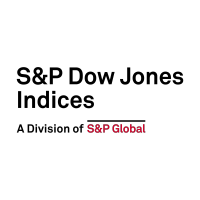Tag Archives: S&P 1500
How Sector Neutrality Influences Risk/Return in S&P Dividend Aristocrats
What are the potential benefits of a sector neutral approach to S&P Dividend Aristocrats? S&P DJI’s Rupert Watts and State Street Global Advisors’ Colin Ireland explore the construction and range of potential applications for the S&P Sector-Neutral High Yield Dividend Aristocrats.
- Categories Equities
-
Other Tags
diversification, ETFs, high yield dividend growers, indexing, large-cap equities, Mid-cap equities, quality dividend growers, Rupert Watts, S&P 400, S&P 500, S&P 600, S&P Composite 1500, S&P Dividend Aristocrats, S&P Sector-Neutral High Yield Dividend Aristocrats, sector-neutrality, sectors, small-cap equities, U.S. Equities
- Categories
- Equities
- Other Tags
- diversification, ETFs, high yield dividend growers, indexing, large-cap equities, Mid-cap equities, quality dividend growers, Rupert Watts, S&P 400, S&P 500, S&P 600, S&P Composite 1500, S&P Dividend Aristocrats, S&P Sector-Neutral High Yield Dividend Aristocrats, sector-neutrality, sectors, small-cap equities, U.S. Equities
Connecting the S&P/ASX 200 to U.S. Equity Icons
Many market participants have a “home bias,” typically having larger exposures to domestic securities than would be determined by their representation in the global opportunity set. Australia is no exception: compared to Australia’s 2% weight in the S&P Global BMI, Australian investors allocated an estimated 49% of their total equity allocation to domestic stocks at…
- Categories Equities
- Other Tags
S&P ESG High Yield Dividend Aristocrats Index – Adding a Layer of Sustainability via ESG Screening
High-dividend-yielding stocks have been prevalent in 2022, as rising interest rates have put downward pressure on long duration assets. At the same time, market participants are increasingly seeking to align investments with their personal and societal values. The S&P ESG High Yield Dividend Aristocrats® Index may be a strategy that checks both of these boxes….
- Categories Factors, Sustainability
- Other Tags
Why Core Construction Matters
Look inside the S&P 1500 and its core components as S&P DJI’s Hamish Preston explores the performance of Equal Weight and sector indices, as well as highlighting how positive earnings can influence performance.
- Categories Equities
- Other Tags
Mid- and Small-Cap Fund Managers Lost Their Advantage – SPIVA U.S. Mid-Year 2021 Scorecard
The SPIVA® U.S. Mid-Year Scorecard continues to show that active funds’ strong absolute returns do not always translate into relative success compared with their benchmarks. In 15 out of 18 categories of domestic equity funds, the majority of actively managed funds underperformed their benchmarks. Over the 12-month period ending June 30, 2021, 58% of large-cap…
- Categories Equities
- Other Tags
- Categories
- Equities
- Other Tags
Learning from Sector Changes in the S&P Composite 1500
The S&P Composite 1500® serves as a benchmark for around 90% of the U.S. equity market and offers a comprehensive perspective on it.1 Companies in the S&P Composite 1500 are classified into sectors based on the Global Industry Classification Standard (GICS®). As with the benchmark, the S&P Composite 1500 Sector Indices are weighted by float-adjusted…
- Categories Equities
- Other Tags
- Categories
- Equities
- Other Tags
A Practical Look at How Risk is Shifting in Sectors
How can the relationship between sectors and factors help investors identify market regime changes and inform allocations? S&P DJI’s Anu Ganti and Hamish Preston take a closer look at market trends through the lens of S&P Composite 1500® data. Learn more: https://www.spglobal.com/spdji/en/research/article/the-sp-composite-1500-an-efficient-measure-of-the-us-equity-market/
Higher Turnover Ahead For S&P 500? Not Necessarily!
The emergence of COVID-19 caused sizeable recalibrations in financial markets as investors grappled with the anticipated impacts on people’s lives and on economic activity. Given many companies saw significant drops in market capitalizations amid the recent market sell-off, and in light of expectations for companies’ earnings to suffer from reduced economic activity, some may be…
- Categories Equities, S&P 500 & DJIA
- Other Tags
The S&P Composite 1500®: An Efficient Measure of the U.S. Market
The S&P 1500 serves as both a benchmark indicator for U.S. equity market performance and as a basis for passively replicating investment products that aim to deliver a “market” return. Our new paper examines the index from both these perspectives, and compares the S&P 1500 with other U.S. equity market indices. Here are a few…
- Categories Equities, S&P 500 & DJIA
- Other Tags
Durability During Distress
Income-seeking investors have always had to compromise between the level of dividend payments and the safety of dividend payments. The importance of this tradeoff has recently gone viral, as governmental actions in response to COVID-19 have suppressed global economic activity, causing many companies to suspend or reduce their dividend payments. Launched in 2005, the S&P…
- Categories Strategy
- Other Tags















































